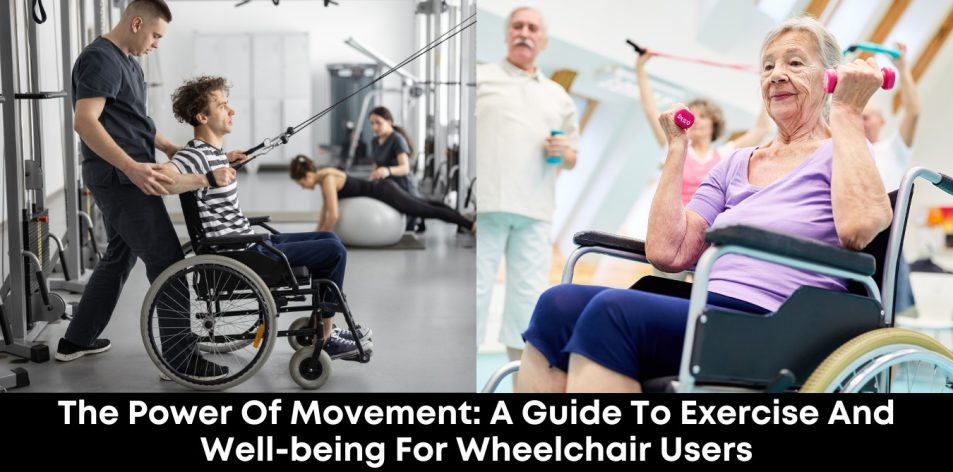Cultivating Strength and Health for a Fulfilling Life
Movement and exercise are vital for everyone, and for individuals who use wheelchairs, they are especially important for both physical and mental well-being. Regular physical activity can combat the health challenges associated with a sedentary lifestyle and enhance independence, quality of life, and overall fitness. This article provides a comprehensive look at the importance of movement for wheelchair users, offering practical advice and a range of activities to help you maintain a strong, healthy, and active life.
The Benefits of Regular Movement and Exercise
Engaging in a regular fitness routine offers numerous advantages that extend far beyond physical appearance:
1. Physical Health and Strength
- Improved Cardiovascular Health: Aerobic exercises, such as hand cycling, swimming, or wheelchair sports, elevate your heart rate and improve circulation. This is crucial for preventing chronic conditions like heart disease, high blood pressure, and type 2 diabetes.
- Enhanced Upper Body Strength: The constant pushing motion of a wheelchair can place significant strain on the shoulders and arms. Targeted exercises strengthen the supporting muscles, which can reduce the risk of injury, improve posture, and make daily tasks, such as self-propelling your wheelchair and transfers, much easier.
- Increased Flexibility and Range of Motion: Regular stretching and movement help maintain joint flexibility and a full range of motion. This can reduce stiffness and prevent secondary complications.
- Weight Management: Physical activity helps burn calories and build muscle, which is essential for managing a healthy weight and preventing obesity, a common risk factor for many chronic illnesses.
2. Mental and Emotional Well-being
- Stress and Anxiety Reduction: Exercise is a natural mood booster. It releases endorphins, the body’s feel-good chemicals, which help to reduce stress, anxiety, and symptoms of depression.
- Improved Mental Clarity: Physical activity increases blood flow to the brain, enhancing cognitive function, focus, and memory.
- Sense of Empowerment: Setting and achieving fitness goals, no matter how small, can significantly boost self-confidence and self-esteem. It provides a sense of accomplishment and control over your body and health.
- Social Connection: Participating in adaptive sports or group fitness classes can be a great way to meet new people, build a supportive community, and combat feelings of loneliness or isolation.
Getting Started: Finding Your Fitness Routine
Before beginning any new exercise programme, it is essential to consult with a healthcare professional or a physical therapist. They can help you create a safe and effective plan tailored to your specific needs and abilities.
- Start with Small, Achievable Goals: Begin with short sessions and gradually increase the duration and intensity. Consistency is more important than intensity in the beginning.
- Find an Activity You Enjoy: The key to a sustainable fitness routine is to choose an activity that you look forward to. This could be anything from a structured sport to a simple daily stretch.
Examples of Exercises and Activities
There are many ways to stay active, regardless of your mobility level:
- Upper Body Strengthening: Exercises like bicep curls, shoulder presses, and seated rows with light hand weights or resistance bands are excellent for building upper body strength.
- Cardiovascular Health:
- Hand Cycling: Using a hand-propelled bicycle can be a great way to get a full upper-body workout.
- Swimming: Water provides buoyancy and resistance, making it an excellent, low-impact exercise for both cardiovascular health and strength.
- Wheelchair Aerobics: Many fitness classes are now adapted for seated participants, offering a fun and social way to get your heart rate up.
- Adaptive Sports:
- Wheelchair Basketball: A fast-paced team sport that builds endurance and strength.
- Wheelchair Tennis: A popular individual sport that improves coordination and agility.
- Wheelchair Racing: A competitive and high-intensity option for those who enjoy speed and endurance challenges.
- Mind-Body Connection:
- Seated Yoga or Pilates: These practices focus on controlled movements, stretching, and breathing, which can improve flexibility, balance, and mental focus.
A Commitment to a Healthier Future
Adopting an active lifestyle while using a wheelchair is a powerful step towards a healthier, more independent, and fulfilling life. It’s a journey of self-care and empowerment that proves that movement is a fundamental part of human well-being for everyone, regardless of their circumstances. By prioritising your health through regular exercise, you can unlock a world of physical and mental benefits, helping you live your life to the fullest.

